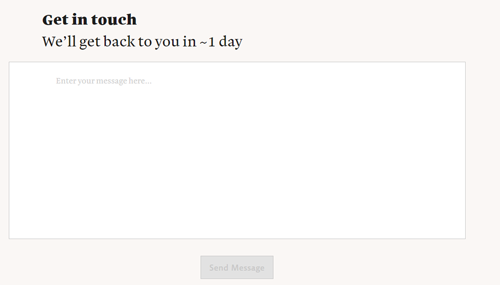3 Questions to Manage Customer Service Expectations

The digital customer service landscape is changing rapidly, and it's making it difficult for small businesses (SMBs) to keep up.
Not only are consumers' expectations higher than ever, but emerging channels like social and mobile are becoming an integral part of the customer service industry. In fact, 2016 data from call center software provider Aspect shows that 38 percent of consumers would rather use messaging apps, like Facebook Messenger or WhatsApp, for their customer service needs over phone calls.
Although this percentage isn't the majority, it is still quite high considering that customer service through messaging apps is a fairly new strategy. Unfortunately, many SMBs don't have the manpower to offer round-the-clock service in all of the digital channels their customers are in.
Even so, that doesn't mean they can't still satisfy customers, and it all starts by managing expectations with answers to these simple questions:
1. Where are you available?
The first step in managing expectations is to let customers know where they can find a business. This can be done by displaying clear and complete contact information on a website. Although many businesses will only include a phone number and email contact form in this area, it is important to empower customers by letting them decide where they want to contact the company - whether it be on Twitter or through a messaging app. It is also a good idea to include a link to the FAQ page on the contact page, as this will prompt some customers to find the answers to questions on their own (more on this below).
2. When can customers expect a response?
In addition to letting customers know where to find a customer service team, it is essential to let them know when representatives are available (or will respond).

Take live chat as an example. Since most SMBs don't have the resources to offer 24/7 live chat service, they should manage customer expectations by adding hours of availability to the live chat window and offer customers the option to leave a message when a customer chat agent is unavailable.
Along with managing expectations for live chat, SMBs should do the same for non-traditional customer service channels. Social, for instance, is a big area of opportunity for brands of all sizes, as Q2 2016 data from Sprout Social found that brands send 23 promotional messages for every one response given to a customer.
What's more, brands that do respond keep customers waiting an average of 11 hours.
Fortunately, managing the expectations of social customer service can be as simple as updating a Twitter bio. On Twitter, for example, brands can include customer service information in the bio, such as the handle of a dedicated customer service account and the hours customers can receive real-time responses.
Customer service on the world's largest social network, however, requires a different strategy. For tips on how to manage customer service expectations on Facebook (and Facebook Messenger), check out Website Magazine's "Become a Customer Service Pro on Facebook."
3. Is self-service an option?
Forrester's Dec. 2015 Customer Lifecycle Survey found that for the second year in a row, respondents reported using Web or mobile self-service more than speaking with agents over the phone. Luckily for SMBs, empowering this growing customer service channel can be as easy as sprucing up a FAQs section. Brands can take inventory of their customers' most common questions and feedback, add this information to their FAQs content and make the page easily accessible.
An additional way SMBs can encourage self-service is by creating tutorials and featuring them where they will be the most useful. For instance, if a pet store retailer receives several inquiries about kennel training for puppies, the retailer could feature a blog post or video titled "A Guide to Kennel Training"¬ù on his or her kennel-related product pages.
Exceed Expectations
Managing customer expectations makes it easier for customer service representatives to exceed expectations. This is because customers are not left wondering how to contact a brand or when they will receive a response. What's more, satisfied customers are more likely to be repeat customers, and every savvy business owner knows that retaining a customer is more cost effective than acquiring a new one.







